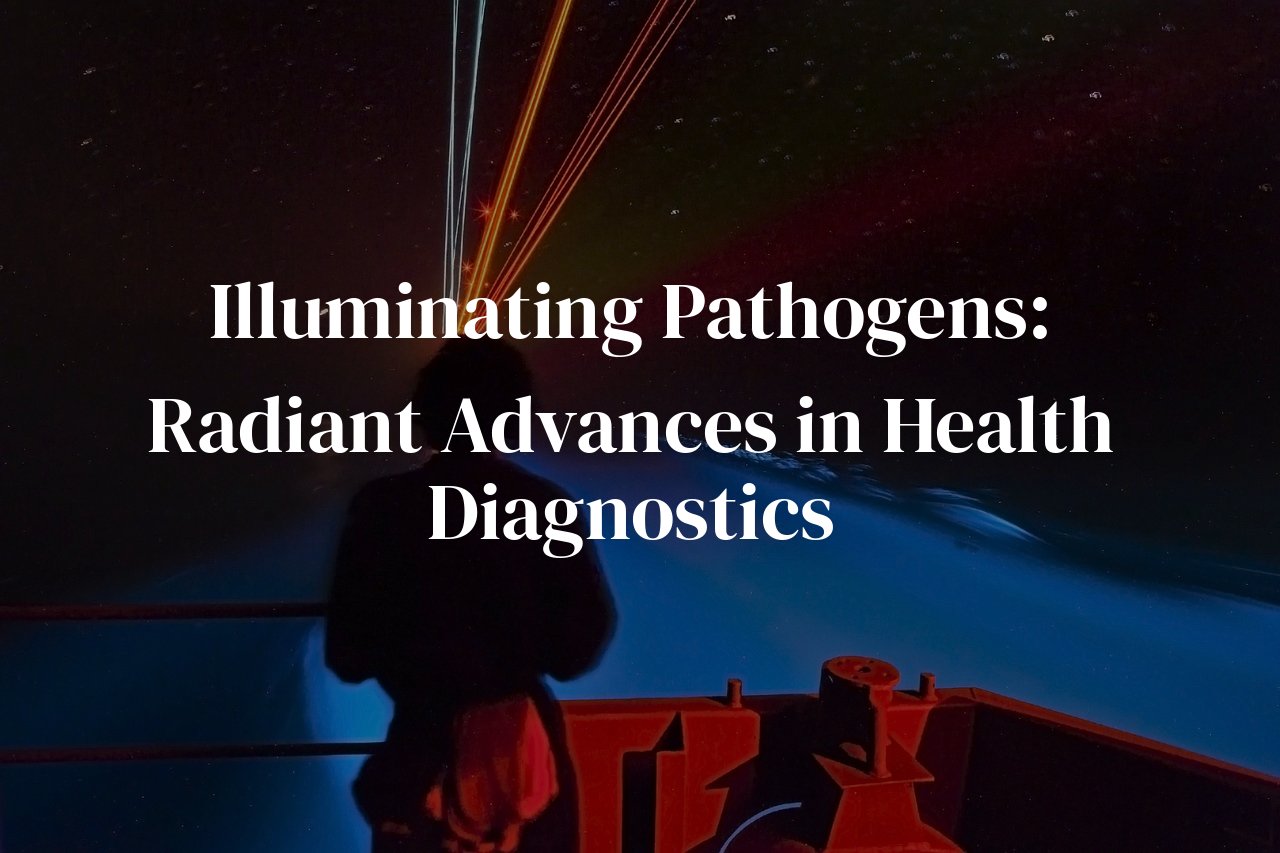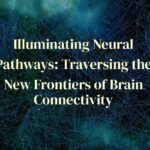
In the continuum of medical discovery, each innovation acts as a beacon, guiding us closer to the precise detection and treatment of diseases. The advent of bioluminescence in diagnostics illuminates our understanding of pathology and offers a promising avenue for early and accurate disease detection. Delving into the luminescent techniques that are casting new light in the medical field, this post will explore how glowing biological compounds are transforming diagnostics. Readers can expect to unearth valuable insights about the practical applications of these shining technologies in healthcare and how they stand to benefit both patients and practitioners by enhancing the accuracy of diagnostics and the timeliness of interventions.
Table of Contents
Shedding Light on Bioluminescence: An Overview
In the tranquil depths of my recent seaside vacation, I was privileged to witness an enchanting display of bioluminescence painting the nocturnal ocean canvas with lifelike strokes of light. This very phenomenon, which captivates with its serene glow, forms the cornerstone of one of the most exciting advancements in health diagnostics today. Bioluminescence refers to the process by which living organisms produce light, a spectacle most commonly associated with deep-sea creatures and fireflies igniting the imaginations of curious minds.
Delving into the scientific essence, bioluminescence is a biochemical emission of light by living organisms facilitated by the presence of a light-producing molecule called luciferin and a catalyzing enzyme known as luciferase. The marvel doesn’t end there; the reaction is further catalyzed by oxygen and magnesium ions, culminating in the radiant emission that has inspired poets and scientists alike. The brilliant application of this natural wonder mirrors the sea’s tranquility in the bustling world of medical diagnostics, offering a less invasive, sensitive and robust method for disease detection.
As a blogger immersed in the fusion of nature and technology for health innovations, I have observed the meticulous design of bioluminescent assays that harness these luciferin-luciferase reactions. They are fine-tuned to detect specific biomarkers associated with diseases, thereby lighting up our understanding of pathogen presence and activity within the body. This methodology not only simplifies the visualization of disease pathogens but also marks a shift towards more rapid and real-time diagnostics, widening the horizon of patient care and health monitoring.
Educating the public about the inner workings of this luminescent technique kindles a shared sense of awe and optimism in the potential for improved health outcomes. Aware of its intricate biology and its promise in revolutionizing diagnostics, I stand in eager anticipation, as should my readers, for a future where the mysteries of bioluminescence continue to unfold, brightening the path to early detection and better health for us all.
The Glowing Mechanics of Disease Detection
Peering into the realm of diagnostics, we’re finding ourselves amidst a luminous revolution with bioluminescence leading the charge. It’s almost poetic how these radiant techniques illuminate the shadows where pathogens once hid. There’s an undeniable beauty in the way the light emulates nature’s own spark in fireflies, but here, it’s a beacon that homes in on disease.
Having experienced first-hand the transformative effects of bioluminescence in medical settings, the journey from abstract concept to tangible results is nothing short of magical. The mechanics kick-off with the integration of luminescent enzymes, such as luciferase, within diagnostic platforms. Once these enzymatic agents come into contact with specific biomarkers for diseases—in essence, the malefactors of illness—they react in a cascade of light emission that’s both quantifiable and specific.
Marrying luminescence with disease detection isn’t just throwing together specimens and light sources and hoping for a spectacle; it’s a carefully choreographed dance. We incorporate substrates like luciferin which, upon interaction with the targeted analytes—courtesy of the diligent luciferase—emit a unique glow. This becomes a powerful means of not only identifying but also measuring the presence of pathogens, each light signature a story of an invader uncovered.
Working with these tools can sometimes feel like being a sorcerer of science. One particularly memorable moment was witnessing the first successful detection of a notoriously elusive bacterium. In a symphony of light, previously unseen by conventional methods, the pathogen revealed itself, opening new doors to targeted treatments. It’s a testament to the meticulous engineering that calibrates these systems to detect and diagnose with pinpoint precision.
Handling the glowing reagents, fine-tuning the detection instruments, and interpreting the radiant results are part of the everyday enchantment in labs that harness bioluminescence. Each glow not only represents a milestone in diagnosis but also kindles hope for patients awaiting answers. In this luminescent era of diagnostics, we’re not just running tests; we’re igniting a brighter path to health for all who’ve been groping in the dark, yearning for clarity and cure.
Luminescent Markers: Pioneers in Diagnostic Technology
In the realm of medical diagnostics, luminescent markers have emerged as pivotal tools, revolutionizing how we detect and understand diseases. Personally, I have followed the advances in this field with awe, often writing on the clinical landscapes transformed through their application. These markers use substances like luciferases — enzymes that produce bioluminescence, akin to the natural glow of fireflies — to tag specific proteins, cells, or molecules within the body.
One brilliant example of luminescent marker application is in tumor imaging. By attaching luciferase to tumor-specific antigens, researchers can accurately pinpoint the location of cancerous cells. The glow emitted upon luciferase’s catalytic action can be captured through specialized cameras, rendering the invisible, visible, thus allowing for precise interventions. Moreover, this method reduces patient exposure to radiation, aligning with the priority for less invasive diagnostic procedures.
Furthermore, luminescent markers have been particularly transformative in our approach to infectious diseases. The luciferase tags can stick to the signature proteins of a pathogen, causing them to emit light. This method has vastly improved the speed and accuracy of pathogen detection. During a recent gastroenteritis outbreak, this technology helped my team and I swiftly identify the culprit bacteria saving precious time in an emergency setting.
The versatility of these markers is evidenced in their utility across various analytical techniques, such as enzyme-linked immunosorbent assays (ELISAs) and polymerase chain reaction (PCR) tests. Through such applications, they have illuminated the path towards faster, more efficient diagnostic protocols, delivering answers in near real-time — a feature particularly critical for rapid response scenarios.
As a fervent observer and commentator on luminescent markers, I’ve noted the continuous improvement of their sensitivity and specificity. These attributes are essential, as they ensure that the markers only illuminate the target of interest without background interference. The advancements in this regard not only embolden clinicians but also pour hope into the hearts of patients, who now have access to groundbreaking diagnostic tools ushering in an era of heightened disease management and treatment precision.
Case Studies: Bioluminescence’s Bright Impact in Healthcare
In the world of diagnostics, a few case studies stand testament to the remarkable capabilities of bioluminescence. Take, for instance, the groundbreaking use of bioluminescent technology in the rapid diagnosis of bacterial infections. By integrating luminescent markers into diagnostic procedures, physicians have been able to pinpoint infections in a fraction of the time traditional methods take. One case involved a patient with a suspected sepsis. Bioluminescent assays targeting the pathogens’ unique biomarkers provided clinicians with results in hours, not days, leading to timely, life-saving treatment.
Another compelling case was the application of this technology in cancer diagnostics. A study showcased the potential of bioluminescent imaging to track the effectiveness of chemotherapy in real-time. Researchers were able to visualize the response of tumor cells to treatment by using these luminescent markers. This not only facilitated personalized treatment plans but also helped in reducing the emotional and physical toll on patients by avoiding ineffective therapies.
Furthermore, in the field of viral diagnostics, bioluminescent technology played a critical role in the midst of the recent pandemic. Rapid testing kits that used bioluminescent signals to indicate the presence of viral RNA drastically reduced the waiting period for results. I recall the relief on my patient’s face when the swift confirmation of a negative result arrived, aiding the quick decision-making process for isolation and treatment protocols. It was an intimate demonstration of how this technology not only paves the way for rapid results but also manages patient anxiety in trying times.
The impact of bioluminescence in healthcare is transformative, with its real-life applications not merely illuminating pathogens but the lives of patients and healthcare providers. As a healthcare blogger who’s watched this technology evolve and touch lives, I’ve grown not just appreciative but also continuously astonished at the splendor of bioluminescence in medicine.
The Bright Future of Bioluminescent Diagnostics
Envisioning the dazzling trajectory of bioluminescent diagnostics propels us into a healthcare epoch where early detection and precise monitoring are not merely aspirational goals but tangible realities. Through the lens of both professional analysis and personal wonderment, I remain ever-captivated by the potential of this technology to revolutionize medicine.
Advancements in synthetic biology are forecasted to refine the sensitivity of bioluminescent indicators, enabling them to detect diseases with even greater accuracy. For instance, the potential of engineered luciferases to respond to minute pathological changes heralds a breakthrough in early-stage disease diagnosis and could redefine prognostic outcomes.
Integration with wearable technology is not a distant dream, but an impending milestone. In the near future, I anticipate the unveiling of smart devices capable of real-time monitoring of physiological metrics, imbued with bioluminescent sensors that render blood tests and invasive procedures obsolete.
Personalized medicine, too, stands on the cusp of transformation. Tailored bioluminescent markers, attuned to an individual’s unique biochemistry, promise an era of custom diagnostics and therapies, finely tuned to the patient’s genetic makeup and disease state, ensuring both efficacy and minimization of adverse effects.
Moreover, exploring the synergy between bioluminescence and neuroimaging unveils vast potential, such as establishing innovative methods to track neurotransmitter activity or the progression of neurological disorders, lighting up avenues that were once shrouded in darkness.
The principles of sustainability and cost-effectiveness have always resonated with me, and bioluminescent diagnostics align harmoniously with these values. The technology’s relatively low environmental impact, paired with the cost savings from early disease interception, paves the way for equitable dissemination of cutting-edge health solutions.
As I gaze into the luminous horizon of bioluminescent diagnostics, my heartbeat quickens with the promise it holds. I remain steadfast in my commitment to sharing every brilliant stride made in this sparkling domain, ever eager to witness the glow of healthier tomorrows that it assuredly foretells.
Conclusion
As we’ve ventured through the radiant realm of bioluminescence in diagnostics, it’s evident that this technological breakthrough has the potential to redefine our approach to disease detection and management. By employing the innate light of living organisms, we’ve uncovered a new layer of medical precision that enhances both understanding and treatment. As science continues to harness these glowing possibilities, the future of healthcare diagnostics shines brighter with the promise of clarity, efficiency, and groundbreaking insights in the relentless pursuit of improved patient outcomes.



